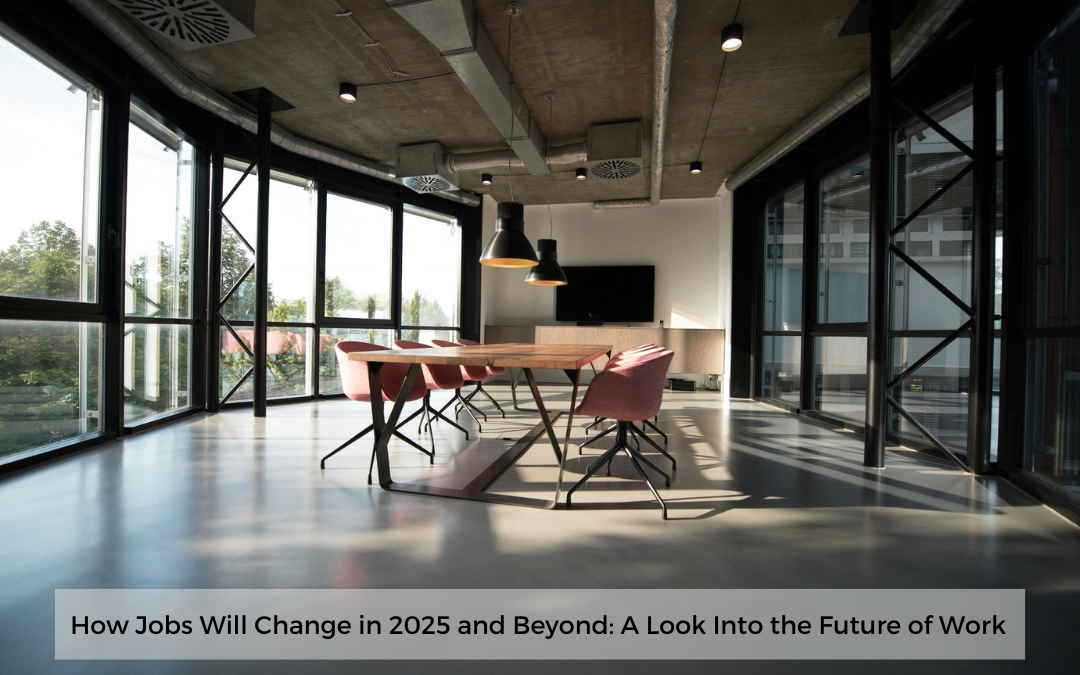Advances in technology, shifting global objectives, and changing employee expectations are driving quicker than ever transformation of the workplace. Trends redefining our work, where we work, and the skills required to thrive will influence the labor market as we gaze ahead to 2025 and beyond. Here is a closer view of the main trends influencing employment going forward.
1. Hybrid Work Models: A New Normal
The epidemic sped up the acceptance of remote labor, and by 2025 hybrid models will rule. Workers today want flexibility in where and when they work, so hybrid arrangements are becoming very common for businesses all around.
Under this approach, workers balance production with teamwork by spending their time between home and office. Companies who provide hybrid choices not only draw top talent but also raise employee retention and satisfaction. Businesses will have to make investments in digital tools, develop adaptable policies, and design offices that support innovation and connectivity if they are to flourish in this climate.
2. The Rise of Automation and AI
Artificial intelligence (AI) and automation are revolutionizing sectors now; they are not futuristic ideas. Routine chores will be increasingly mechanized by 2025, freeing workers to concentrate on strategic, creative, and analytical work.
AI solutions can manage data processing, customer support inquiries, even portions of software development, for example. To collaborate with artificial intelligence systems, workers must thus also change by acquiring complementary skills such emotional intelligence and critical thinking. Businesses that welcome automation and upskill their staff will set the standard in efficiency and creativity.
3. Emphasis on Lifelong Learning
The importance of lifelong learning has never been more evident given the fast changes in sectors and technology. As workers try to remain relevant in a cutthroat employment market, the idea of lifelong learning will grow to be a pillar of professional development.
Companies will give candidates who show a dedication to learning—through professional seminars, certificates, or online courses—top priority. Organizations will therefore have to give staff members chances to upskill and reskill, hence promoting an agile and growing culture.
4. Focus on Employee Well-being
Mental health and general well-being are starting to take front stage for companies and workers as work-life limits blur. Organizations will use comprehensive strategies for workplace wellness by 2025 including mental health resources, flexible scheduling, and programs supporting work-life balance.
Companies might, for instance, provide on-demand counseling services, mental health days, or mindfulness programs. Companies who give employee well-being top priority will have better productivity, reduced turnover, and a stronger employer brand, therefore increasing their competitiveness in the employment market.
Why Do These Trends Matter?
The movements influencing the nature of employment mirror more general changes in society and technical developments. Businesses that change with the times will stay competitive; those that fight adaptation run the danger of lagging behind. Knowing these trends gives staff members a chance to match their professional objectives with needs of the growing industry.
Preparing for the Future
Adapting to the future of work requires proactive steps from both employers and employees:
- For Employers: Make technological investments, give staff development first priority, and draft policies fit for changing corporate expectations.
- For Employees: Stay current with industry trends, welcome lifelong learning, and develop abilities that will be valuable in a different environment.
A Final Thought
For those prepared to welcome change, the future of employment presents plenty of chances. Understanding and getting ready for these changes will help companies and people negotiate the changing employment market with assurance and success.

